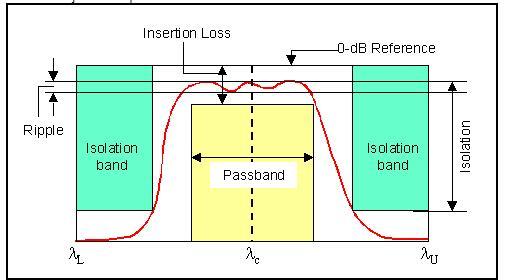综合业务
BUSINESS
非对称光学梳状分波器 Asymmetric Optical Interleaver
所属分类:
传统的光学梳状分波器,是对称的光学梳状分波器。“对称”指的是“奇”和“偶”通道有相同的通频带宽和波形。 Optoplex提供一种新型的,“奇”和“偶”通道具有不同通频带宽和波形的光学梳状分波器。这是FlexSlicer?非对称光学梳状分波器。
联系电话:
- 产品描述
- 产品特点
- 产品应用
- 产品规格
-
传统的光学梳状分波器,是对称的光学梳状分波器。“对称”指的是“奇”和“偶”通道有相同的通频带宽和波形。 Optoplex提供一种新型的,“奇”和“偶”通道具有不同通频带宽和波形的光学梳状分波器。这是FlexSlicer?非对称光学梳状分波器。FlexSlicer?非对称光学梳状分波器在Optoplex的专利技术基础上具有优越的通带和色散特性,特别适合于40-Gb/s的数据传输速率。该该器件的一个主要特点是客户可以指定“奇”和“偶”通道的通频带宽比例。FlexSlicer?通过了基于Telcordia GR-1221的可靠性测试。FlexSlicer?开创了非对称光学梳状分波器的先列。此类产品是专门用以帮助电信运营商实现从低到高数据速率(2.5?10Gb/ s或10?40Gb/秒)传输的过渡。基于FlexSlicer?的帮助,使用相同的电信设备可以让低和高数据信号共存于相同的基础设施。因此运营商可以保留现有的电信设备,而同时以最低成本来实现高数据速率传输的服务。非对称光学梳状分波器,请访问非对称光学梳状分波器。非对称光学梳状分波器
 非对称光学梳状合波器
非对称光学梳状合波器
-
Features and Benefits of Asymmetric Optical InterleaverFlexible Passband Width Allocation (70%/30% or 60%/40%, etc.)Low IL and PDLLow and Customizable DispersionMinimal Thermal DriftDual C- and L-Band CoverageBi-directional DeviceTelcordia GR-1221/63 Qualified
-
Applications of Asymmetric Optical InterleaverExtend Existing Network CapacityBridge Existing & New DWDM PlatformsSystem UpgradeBi-Directional NetworksTotal Signal Power Detection for Raman AmplifierMulti-Wavelength TransponderOptical Comb Filter
-
Parameter Definition
Example
Wavelength Range (nm) is the spectral range over which the optical interleaver's opticalperformance can be met.
1530.33 - 1563.05 nm
Insertion Loss (dB) is the relative power level transmitted to the output ports referenced to the 0-dB level when the optical interleaver is inserted. It is the power difference between the 0-dB level and the minimum power level measured within a given passband window. See figure below.
1.5 dB
Ripple (dB) is defined as the power difference between the minimum loss and the maximum loss within a given passband.
0.3 dB
Passband Bandwidth (GHz) is defined as the spectral width centered at ITU grid at a given power level, typically at 0.5 dB below the minimum insertion loss point.
ITU ± 30 GHz
Isolation (dB) is defined as the power difference between maximum insertion loss measured within a given passband window and the minimum insertion loss measured within the adjacent stopbandwindow
24 dB

Insertion Loss Uniformity (dB) is the difference between the maximum insertion loss and minimum insertion loss over all channels, either within one output port or both ports.
0.3 dB
Polarization Dependent Loss (PDL) (dB) is the difference between the maximum and minimum insertion loss over all polarization states within a given passband window.
0.3 dB
Chromatic Dispersion (CD) (ps/nm) is the derivative of the Group Delay versus wavelength within a given passband width.
24 ps/nm within ITU±20%FSR
Polarization Mode Dispersion (PMD) (ps) is the maximum Differential Group Delay within a givenpassband width.
0.2 ps within ITU±30%FSR
Optical Return Loss (dB) is the ratio between the input power and the reflected power over all polarization states at each port , RL = -10×log10(Pr/Pin).
40 dB
Operating Temperature (°C) is the ambient temperature range over which the device's performance spec can be met.
-5 to 65 °C
Storage Temperature (°C) is the ambient temperature range over which the device can be stored without affecting its intended application afterwards.
-40 to 85 °C
关键词:
留言咨询

